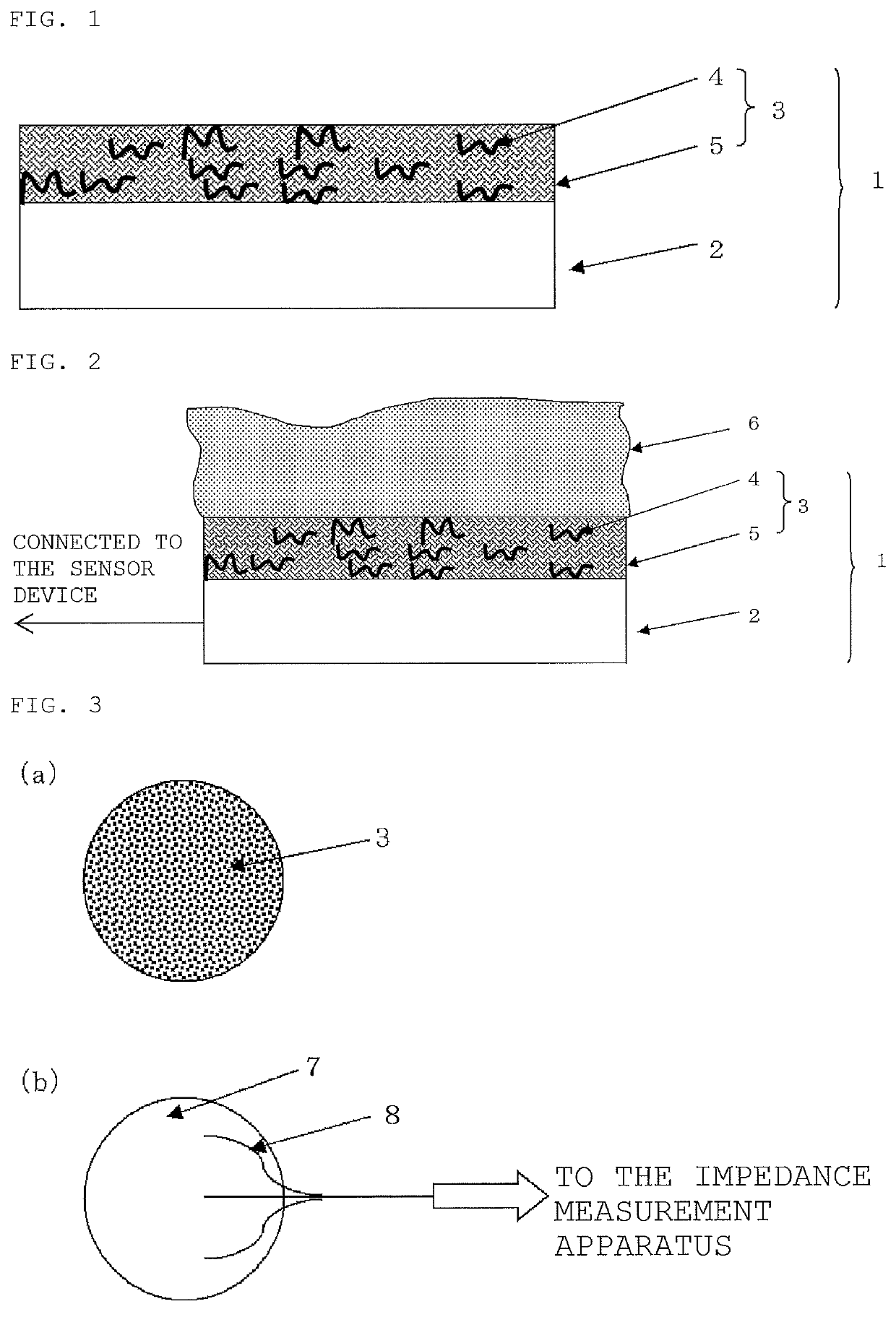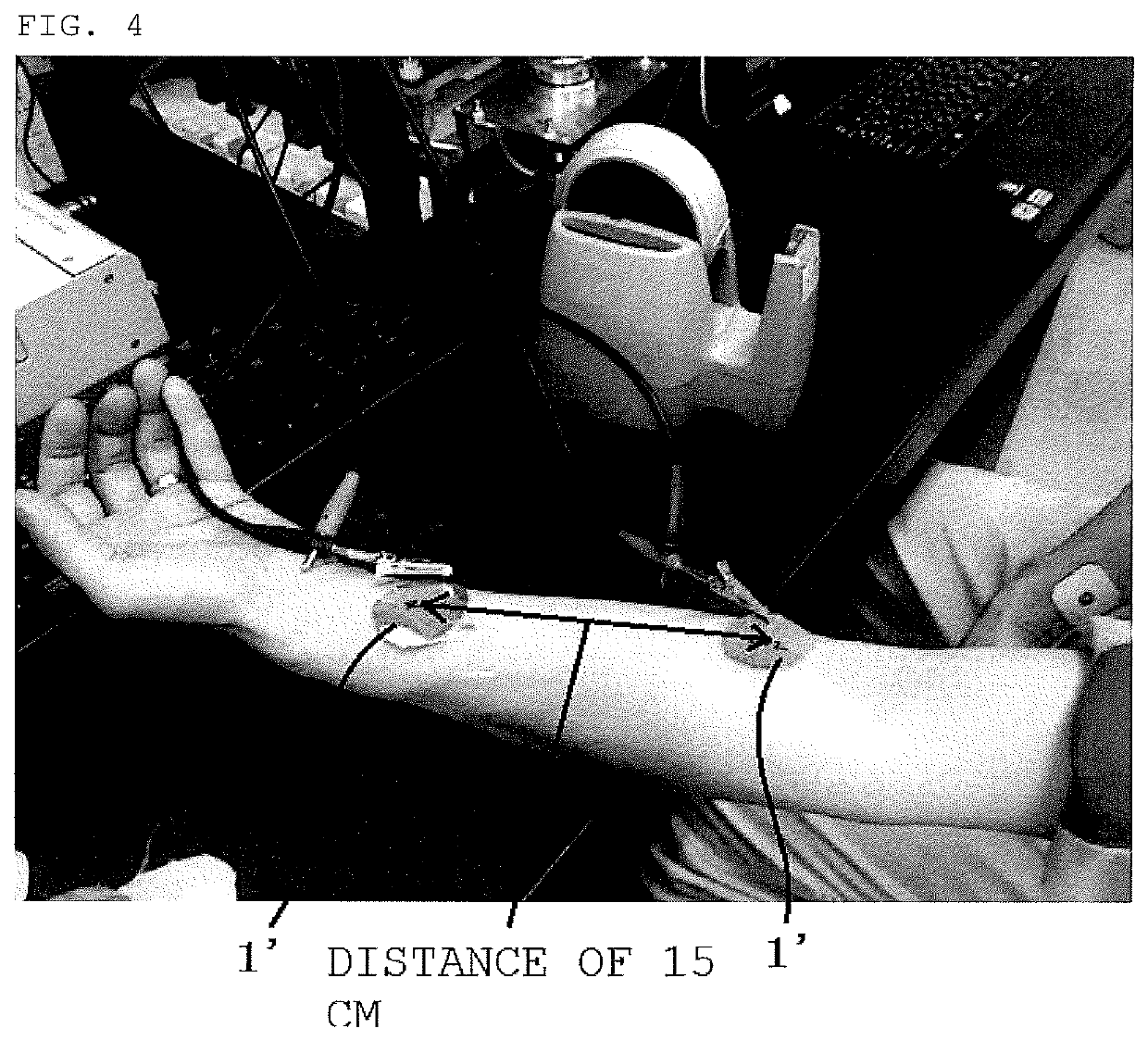Polymerizable monomer, polymer compound, biological electrode composition, biological electrode, and method for producing biological electrode
a polymer compound and monomer technology, applied in the field of polymer compound, biological electrode composition, biological electrode, and method for producing biological electrodes, can solve the problems of loss of conductivity, skin allergy, skin allergy, etc., and achieve excellent conductivity and biocompatibility, efficient transmission of electric signals from skin
- Summary
- Abstract
- Description
- Claims
- Application Information
AI Technical Summary
Benefits of technology
Problems solved by technology
Method used
Image
Examples
synthesis example 1
Synthesis of Polymerizable Monomer (Monomer 1)
[0140]
[0141]After a mixed solution of 17.2 g of 3-(2-methylacryloyloxy)adamantane-1-carboxylic acid and 100 g of toluene was heated to 40° C., 9.5 g of oxalyl chloride was dropwisely added to the mixed solution. After completion of the dropwise addition, the temperature of the resulting solution was raised to 50° C.; and after stirring for 5 hours, it was condensed under reduced pressure to remove residual oxalyl chloride and the solvent to obtain 19.3 g of Acid Chloride 1.
[0142]Next, after a mixed solution of 7.5 g of trifluoromethane sulfonamide, 9.0 g of potassium carbonate, and 60 g of acetonitrile was cooled in an ice bath, to this solution was dropwisely added a mixed solution of 19.3 g of Acid Chloride 1 and 30 g of acetonitrile while cooling the solution in an ice bath. After the temperature of this resulting mixture was raised to room temperature, it was stirred for 22 hours. After completion of the reaction was confirmed with N...
synthesis example 2
Synthesis of Polymer Compound (Polymer)]
[0146]The polymer compound (Polymer) to be blended into the biological electrode composition solution was synthesized with the prescription described below.
synthesis examples 2-1 to 2-14
Syntheses of Ionic Polymers 1 to 14
[0147]After the PGMEA (propyleneglycol-1-monomethylether-2-acetate) solution containing 30% by mass of respective monomers was mixed in a reaction vessel, this solution was cooled to −70° C. under a nitrogen atmosphere; and then degassing under reduced pressure and blowing of nitrogen were repeated for 3 times. After the temperature thereof was raised to room temperature, AIBN (azobisisobutyronitrile) was added thereto as the polymerization initiator with the amount of 0.01 mole relative to 1 mole of total monomers; and then, after the temperature of the resulting mixture was raised to 60° C., the reaction was carried out for 15 hours to obtain a solution containing polymer (Ionic Polymer Solutions 1 to 14). Composition of the obtained polymer was confirmed with 1H-NMR after drying to remove the solvent; and the molecular weight (Mw) and the dispersibility (Mw / Mn) of the obtained polymer were confirmed with GPC using THF as the solvent.
[0148]
wherei...
PUM
| Property | Measurement | Unit |
|---|---|---|
| boiling point | aaaaa | aaaaa |
| temperature | aaaaa | aaaaa |
| reaction time | aaaaa | aaaaa |
Abstract
Description
Claims
Application Information
 Login to View More
Login to View More - R&D
- Intellectual Property
- Life Sciences
- Materials
- Tech Scout
- Unparalleled Data Quality
- Higher Quality Content
- 60% Fewer Hallucinations
Browse by: Latest US Patents, China's latest patents, Technical Efficacy Thesaurus, Application Domain, Technology Topic, Popular Technical Reports.
© 2025 PatSnap. All rights reserved.Legal|Privacy policy|Modern Slavery Act Transparency Statement|Sitemap|About US| Contact US: help@patsnap.com



